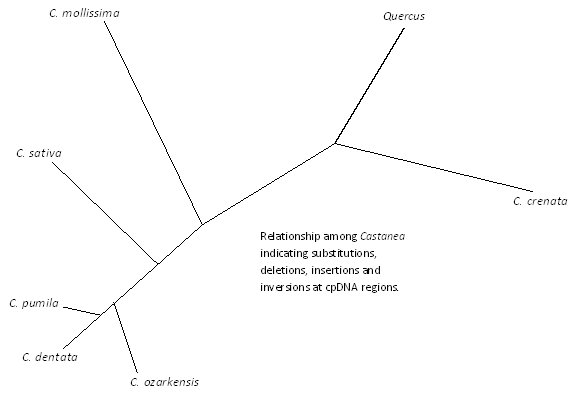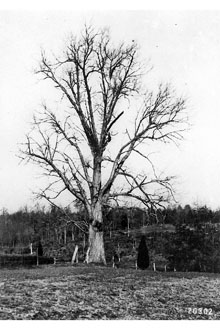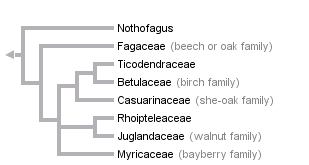In other words, the ancestors.
CLASSIFICATION:
Kingdom
Plantae
≈Plants
Subkingdom
Tracheobionta
≈Vascular
plants
Superdivision
Spermatophyta
≈Seed plants
Division Magnoliophyta ≈Flowering plants
Class
Magnoliopsida
≈Dicotyledons
Subclass
Hamamelididae
Order
Fagales
Family
Fagaceae
≈Beech family
Genus
Castanea ≈chestnut
Species
Castanea dentata ≈American chestnut
Fagaceae represents the oak, chestnut, beech, birch, hazel and ironwood, or otherwise known as the Beech Family. The closest related families to the beech family are the represented below, including commonly known names such as the Birch Family and Walnut Family of trees.
Castanea consists of several European and Asian chestnut species as well as three smaller North American chestnuts known as chinkapins, in addition to the American chestnut. The European chestnut is nearly identical, termed Castanea sativa. The most common seen species in cultivation of North America is the Chinese chestnut (C. mollissima), chiefly known for its nut crops. The three chinkapin species include C. ozarkensis, C. pumila and C. alnifolia. A representation of the showing the inherent relatedness of these species to Castanea dentata is shown below using Quercus, the oaks, as an outgroup for comparison.

Continue on to the Geographic locations of the chestnut tree...which are few and far between nowadays!
Feel free to check out other students' pages as well as our University's website below:

